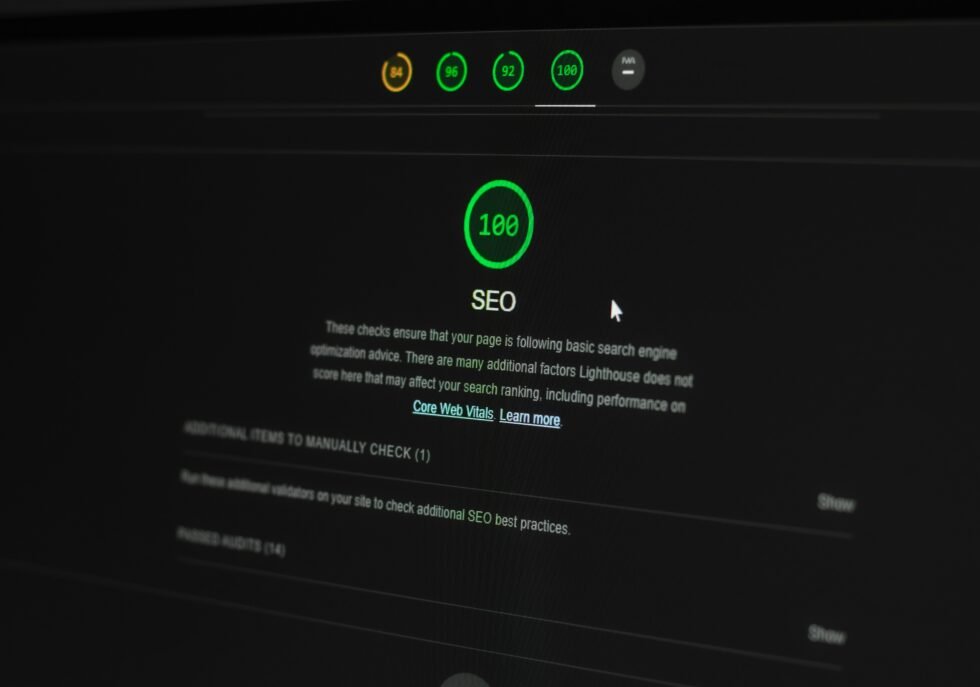Table of Contents
- What do Google Core Updates do?
- The Purpose of Google Core Updates
- History of Google Core Updates
- Identifying changes from Core Updates
- Strategies to Adapt to Core Updates
- The Importance of Quality Content
- Monitoring and Analyzing Traffic Post-Update
- Future of Google Core Updates
- Conclusion: Staying ahead of Core Updates
What do Google Core Updates (Algorithm Changes) do?
Google Core Updates are significant changes to Google’s search algorithm designed to improve search results’ relevance and quality. These updates happen a few times a year and are meant to improve how websites are ranked in search results. This can have an effect on how many people see and visit a site. Google Core Updates differ from regular updates in that they encompass a broader range of topics and can lead to significant changes in rankings for many websites. Regular updates might only focus on small technical improvements or localized results.
The main reason for making these changes is to make sure that users get content that is both useful and of high quality. This project shows that Google is still working to make the user experience better and keep people trusting its search results. Google encourages website owners to make content that is helpful, reliable, and well-organized by putting quality content first.
Website owners and digital marketers need to know what Google Core Updates mean because they can have big effects. Companies that depend on organic search traffic need to keep up with these changes so they can change their plans as needed. Knowing that an update could change ranking metrics can help digital marketers look at where they are now and make changes to their optimizations based on Google’s new rules.
It’s important to stay up to date on these core changes in the world of search engine optimization (SEO). Website owners who understand how important Google Core Updates are are better able to follow best practices for creating and optimizing content. Being aware of this not only helps keep current rankings stable, but it can also lead to big gains in search visibility and overall business performance.
The Purpose of Google Core Updates
Google Core Updates are big changes to the search engine’s algorithms that are meant to help it give users more relevant and high-quality results. One of the main goals of these updates is to improve the quality of search results as a whole. Google wants to better understand what users want and give them content that fits those needs more closely by constantly improving its algorithms. This promise to make search results better not only helps users, but it also makes sure that businesses that make useful content can get more attention in search engine results pages (SERPs).
Another big goal of Google Core Updates is to make the experience better for users. People who search for things want results that are quick, accurate, and helpful to their questions. Google looks at a lot of things to make sure it meets these standards, such as how well a website works, how mobile-friendly it is, and how relevant its content is. Google makes the search experience better for users by giving higher rankings to sites that provide great user experiences. This creates an environment where good content is rewarded. This focus on user experience makes businesses put money into their websites and content quality, knowing that their hard work will show up in search rankings.
Also, these updates are meant to reward sites with good content and make it harder for sites with bad content to be seen. Websites that follow Google’s rules and focus on creating content that is useful, relevant, and well-researched are more likely to rank well. On the other hand, sites with thin content, too many ads, or other dishonest practices will become less visible. Google Core Updates are a way to promote honesty in the digital world by making sure that users are directed to trustworthy, authoritative, and useful resources. This changes how people act and builds trust in the audience.
History of Google Core Updates
Since it first started, Google has been constantly improving its search algorithms. The series of core updates that have brought about big changes in how websites are ranked in search results is a very important part of this evolution. The timeline of these changes shows how dedicated Google is to making search better and more user-friendly.
The Panda update, which came out in February 2011, was one of the first big changes. The goal of this update was to make it less likely that search results would show low-quality content. Websites that used keyword stuffing or didn’t give much useful information saw their rankings drop dramatically. This shows how important it is to have high-quality, relevant content. The Penguin update, which came out in April 2012, targeted manipulative link practices. This made natural link-building techniques more important and made black-hat SEO strategies less effective. Both updates changed the way SEO works in a big way, making businesses change the way they link to and create content on their websites.
As Google kept improving its algorithms, later updates like Hummingbird in August 2013 made it easier for Google to understand conversational search queries and the context of searches in general. Next, the Mobile-Friendly update in April 2015 put mobile-optimized websites at the top of the list. This was because more and more people were using mobile devices to search. The Medic update in March 2018 focused on health and wellness websites. It showed how important it is for content to be written by experts, be authoritative, and be trustworthy. Each of these updates has changed the way websites are ranked in a different way, which means that businesses have to constantly make sure their plans are in line with Google’s changing rules.
In conclusion, the history of Google Core Updates shows that search engine algorithms are always changing. Each new version focuses on improving the user experience while keeping the quality of the web high. Businesses that want to get and keep the best search rankings need to know how these updates work.
Identifying Changes from Core Updates
To keep and improve your business’s search engine ranking, you need to know how Google Core Updates affect your website. A sudden drop in organic traffic is one of the most obvious signs that your site has been affected by a core update. If you see a big drop in the number of people coming to your site from search engines, it could be because Google made some changes. These updates often change the way algorithms rank websites. If your site’s content or structure doesn’t meet the new standards, you may see a big drop in traffic.
Another thing to look at when trying to figure out how a core update has affected your site is how your keyword rankings have changed. If your website used to rank well for certain keywords but suddenly drops, it could mean that the core update changed the signals that determine those rankings. To see how your website’s visibility changes over time, you need to keep an eye on how well your keywords are doing. Use tools like Google Search Console or different analytics platforms to keep an eye on these changes in ranking. They can help you figure out which parts of your site need work or changes.
Changes in how visible you are in search results can also show how you have been affected. Changes to search engine results pages (SERPs), like new features or changes to old ones (like featured snippets or local packs), can affect where your website shows up. To spot these changes quickly, you should check your website’s rankings against those of your competitors on a regular basis and keep up with what’s happening in your field. By keeping a close eye on these metrics, you can be ready to deal with any problems that come up because of core updates. This will help your business adapt and grow in the ever-changing digital world.
Strategies to Adapt to Core Updates
Businesses that want to keep or improve their search rankings need to be able to adapt to Google Core Updates. First and foremost, improving the quality of the content should be the main goal. Businesses need to make sure that the content they make is original, informative, and well-researched, and that it meets the needs of their target audience. Using expert opinions, data-driven insights, and thorough coverage of relevant topics can greatly improve the quality of your content, which is in line with Google’s focus on authoritative information.
Another important strategy is to improve the user experience. This includes making the website easier to use, speeding up load times, and making sure it works well on mobile devices. A website that is well-organized and looks good can keep smashed visitors interested and make them want to learn more. Adding easy-to-use navigation and clear calls to action (CTAs) also makes for a good user experience, which tells Google that your site is useful and easy to use.
When making changes to your core updates, you can’t ignore technical SEO. It’s very important to check your website for problems like broken links, duplicate content, and crawl errors on a regular basis. Making sure that the technical framework of your site supports search engine indexing can have a direct effect on how well your site does in search results. Using structured data and the right meta tags will also help search engines understand your content better, which will make you even more visible.
Lastly, businesses need to keep checking and changing their content to stay relevant as search intent changes. Regularly looking at how users behave and changing your content strategies based on that can help you stay in line with the changing needs of your audience. By keeping up with changes in your field and constantly improving your strategy, you can make your business strong enough to handle the changes that Google Core Updates bring. Businesses can do well in the ever-changing world of online search if they take a proactive approach that includes content quality, user experience, technical SEO, and relevance.
The Importance of Quality Content
The role of quality content in digital marketing is very important, especially when it comes to Google Core Updates. These updates are meant to make search results better by giving more weight to content that shows expertise, authority, and trustworthiness. As businesses work to improve their online presence, it’s very important to know these traits in order to stand out in search results.
First, being an expert means showing that you know a lot about the topic at hand. Google sees that the creator of content has the knowledge to give useful insights when it is well-researched and based on reliable sources. For example, articles that go into depth on technical topics like health or finance should be written by experts or have input from qualified professionals. This not only makes the content seem more authoritative, but it also makes readers trust it more.
Expertise and authority are closely related; they show how well-known the content creator is in a certain field. Websites and authors that regularly publish good content are more likely to get links from other trustworthy sources. This backlinking strengthens their reputation as experts, which helps them rank higher in search results. Google also looks at signals like domain authority and the quality of inbound links. This means that authority is a very important factor in how visible a website is in search results.
The last part of quality content is trustworthiness, which depends on how clearly the information is presented. Google’s algorithms reward websites that put user safety first. These websites use HTTPS protocols, make it easy to find contact information, and have an interface that is easy to navigate. This not only makes the experience better for users, but it also gives visitors peace of mind that the content is reliable.
In the end, making high-quality content is not just a way to follow Google’s Core Updates; it’s also a key part of long-term online success. By building expertise, authority, and trustworthiness, businesses can improve their search rankings, which will make them more visible and encourage more people to interact with them.
Monitoring and Analyzing Traffic Post-Update
Business owners should make it a priority to keep an eye on and analyze their website’s traffic and performance after a Google Core Update. To change your digital strategies in the best way, you need to know how these updates affect a site’s rankings. Changes in traffic can show how well a site works with Google’s changing algorithms. Businesses can stay ahead of the competition by consistently tracking changes and responding to them.
There are a number of important metrics and tools that can help you fully analyze how your website is doing after a Core Update. Google Analytics and other website analytics tools are very important for keeping track of how users interact with your site, such as how many pages they view, how often they leave, and how long they stay on your site. These numbers show how visitors use a site after an update. If your organic traffic drops a lot, it could mean that you need to improve some areas to meet Google’s new quality standards.
Also, tools like Google Search Console can give you useful information about search queries and impressions. To understand how the update affected search visibility, you need to keep an eye on how the rankings of your target keywords change. Seeing a drop in certain keywords may point out chances to improve content or optimize keywords, which can help business owners make smart changes.
Also, how fast a site loads and how well it works on mobile devices are very important factors that affect Google’s ranking algorithms. Tools like Google PageSpeed Insights can help you look at these performance factors and suggest ways to improve them. Overall, it’s important to keep an eye on and analyze website traffic after an update so that businesses can find out what works and what doesn’t. This will help them improve their online presence and performance after algorithm changes.
Future of Google Core Updates
Search engine optimization is always changing, and Google Core Updates are a big part of how this environment changes. There are some things we can expect to see happen with search algorithms in the future. First, future updates will probably focus on how important user experience is becoming. Google has always stressed how important it is for websites to be easy to use. To rank higher, sites must load quickly, work well on mobile devices, and have interesting content.
Also, as artificial intelligence and machine learning get better, we can expect updates that make it even easier for Google to figure out what users want and what they mean. Google will be able to understand searches better with the help of new technologies like natural language processing (NLP). This will lead to search results that are more relevant. Because of this, businesses should focus on making content that is very useful and informative to keep up with these changes in search technology.
Another thing that interests me is the possibility of customizing search results. Google may change search results based on a person’s preferences and past behavior as user data gets more complex. To get ready for this change, businesses should spend time getting to know their target audience and coming up with ways to connect with them that work. This could mean using data analysis to improve content and marketing strategies that work better for certain groups of people.
Finally, Google’s algorithm will probably keep getting better at voice search and visual search, which will reflect how people are using these features. Businesses should plan around these trends by making their content better for voice and mobile searches. This will make them easier to find. In conclusion, businesses that want to keep and grow their online presence in a more competitive environment will need to adapt to the changes that Google Core Updates are likely to bring.
Conclusion: Staying Ahead of Core Updates
Any business that wants to keep or improve its search engine ranking needs to know about Google Core Updates. These updates can have a big effect on how visible a website is, which can affect traffic, sales, and customer engagement. Businesses that don’t keep up with these changes may find themselves at a disadvantage compared to competitors who do.
One of the most important things to remember is that Google’s algorithm is always changing, and it now puts more weight on high-quality content and user experience. This means that it’s very important to make content that answers users’ questions, is in line with what they’re looking for, and is easy to read. Businesses can make sure that their websites stay relevant in search results by following the rules and guidelines set by each update.
Also, businesses need to keep an eye on how their rankings change after a core update. You can learn how these updates are affecting website performance by regularly looking at analytics. If visibility goes down, it may be necessary to do a full review of the website’s content, user experience, and technical SEO to find areas that need to be improved.
Also, it’s a good idea to keep up with the latest news and trends in the SEO field and Google’s updates. SEO communities, following SEO experts, and going to relevant webinars can help businesses learn how to change their strategies to fit with what Google wants. Finally, a commitment to constantly improving content and a focus on giving users great value will be the keys to long-term success in a digital world that is always changing.




